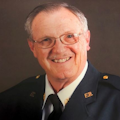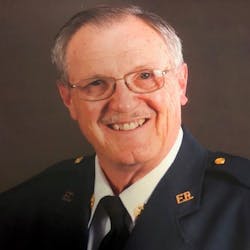VFDs Facing Challenges to Recover from COVID-19
Editor's note: Find Firehouse.com's complete coverage of the COVID-19 pandemic here.
The challenges of COVID-19 for the volunteer fire and rescue service of our nation have had a much deeper effect than the financial crisis many volunteer companies now face. Underlying issues affecting personnel, recruitment, future fundraising and community relationships will complicate the stability of many volunteer fire and rescue companies as they recover from the pandemic.
The financial crisis facing many volunteer fire departments adds to the further difficulties in convincing volunteers to once again work in a public environment. Ladies auxiliaries and members that are no longer operational make up the backbone of fundraising in many volunteer fire companies. A large majority of these individuals are in the “at risk” population for COVID-19. A looming question is whether these dedicated, often lifetime members of the volunteer fire and rescue service are willing to work together as a group or serve at public fundraising events.
Carnivals, banquets and other large public gatherings will provide the highest level of potential virus transmission. Even when these large gatherings are once again allowed, will members that are over the age of 65, many with underlying medical conditions, be willing to work in a large public setting. Even setting up and cooking for such events usually requires at least 10 people that work in close proximity and often in rather confined areas such as a fire house kitchen.
RELATED:
Another factor is will those members will even want to come back and work at fundraising events at all? This may be the first time in decades that many of these members have taken an extended break from “working” at the firehouse. After several months of a sabbatical, facing being at the firehouse nearly every weekend doing physical labor versus relaxing at home, visiting grandchildren, or simply enjoying a real retirement may convince some members to finally stop working functions and enjoy the rest of their life.
Many volunteer fire and rescue companies also face challenges with operational members. You need only to review the monthly line-of-duty deaths to see how dependent the nation’s volunteer fire and rescue service is on older operational members. Some of these members have already backed off from responding during the height of the pandemic. These older members are often depended on as drivers or officers, especially during daytime hours. Even more critical are the older members that have served as primary EMS providers. How many of these individuals have ceased responding or will decide now is the time to remove themselves from operational status?
Our senior members face a very serious decision to continue to serve the community or risk their own health with a higher potential for death. If our veteran volunteers decide now is the time to step back, what affect will their void have on providing fire and EMS service to the community. At this point in time, recruitment and retention is NOT the answer. Recruitment and retention efforts have been curtailed or at least stymied by the pandemic.
Since March, many volunteer fire and rescue departments have not held company membership meetings. By cancelling meetings, many departments have also held any new membership applications or anyone seeking membership at bay. New members may not be able to complete the membership process, which often requires a vote of the full membership, to become a new member. Recruitment efforts in schools, colleges and in public venues have halted. New potential members may be at a loss how to proceed to becoming a part of the volunteer service.
The social aspect of the volunteer fire and rescue service has been brought to a sudden stop. Family nights, fire department picnics and other social activities utilized as retention efforts can no longer occur. Active members may not be able to make their LOSAP (Length of Service Awards Program) points due to lack of projects, meetings and fundraising events that award points toward the annual point minimum. The inability to make LOSAP this year will serve as a disincentive unless companies or administering governmental entities make program accommodations to assure members can make the annual LOSAP requirement.
Many firehouses are in lockdown only allowing on duty or standby personnel in the station. The morning “coffee club” of older members and retired firefighters has ceased. For many of our veteran firefighters, these traditional morning gatherings were a part of the everyday life. Members just stopping by the firehouse for conversation and socialization have been curtailed. Fire stations that were the center of community life are now quiet catacombs of fire trucks.
The drastic effect of COVID-19 on our nation’s volunteer fire and rescue service has reached deep into the soul of the fire service family. Not only will volunteer fire and rescue departments have to scramble to raise money to offset the drastic decrease in income, but many departments may struggle to encourage members to return to service. Recruitment and retention efforts may have to be totally revamped and changed to meet the changing environment.
The volunteer fire and rescue service of our nation has responded to wars, pandemics, and weather events. We continue the tradition of service by responding to the crisis today. There is no doubt we will improvise and survive. Though steeped in tradition, our volunteer fire and rescue service has always stepped up to meet a challenge. What will become the “new normal” in the future will be incorporated into the daily lives of our nation’s volunteer fire and rescue service.
About the Author

Clarence Jewell
Clarence “Chip” Jewell is in his 54th year as an active volunteer. He is a life member of the Libertytown, MD, Volunteer Fire Department and the Junior Fire Co. No. 2 in Frederick, MD. Jewell retired in 2017 as the deputy chief/director of the Frederick County, MD, Division of Volunteer Fire & Rescue Services, a combination service that consists of 25 independent fire and rescue companies, 600 operational volunteers, 1,700 volunteers and more than 400 career personnel. He has a bachelor's degree in fire science from the University of Maryland/University College. Jewell is a management-level instructor for the Maryland Fire and Rescue Institute. He is active on several committees of the Maryland State Firemen’s Association.
